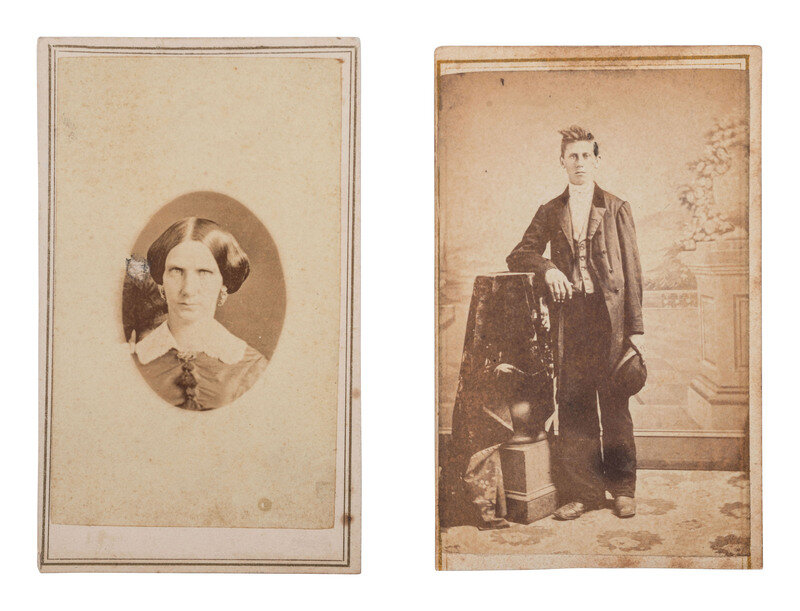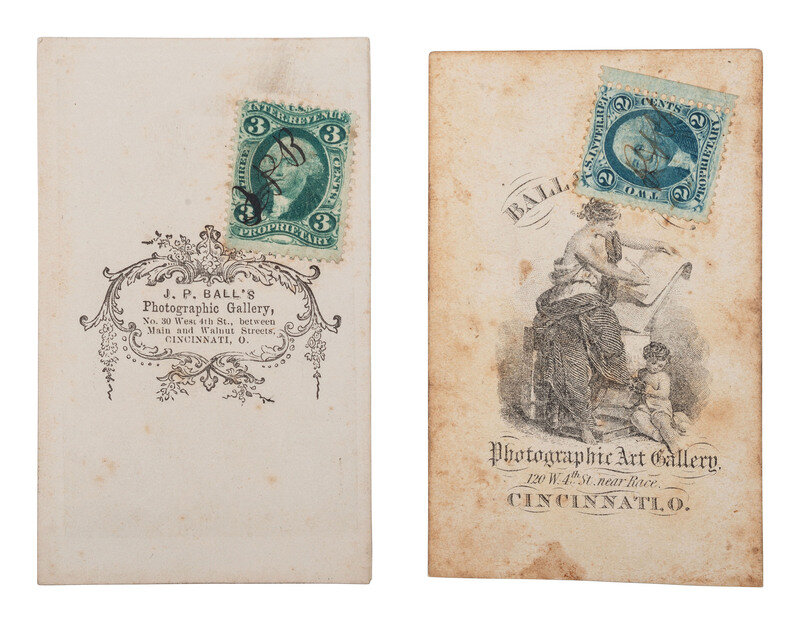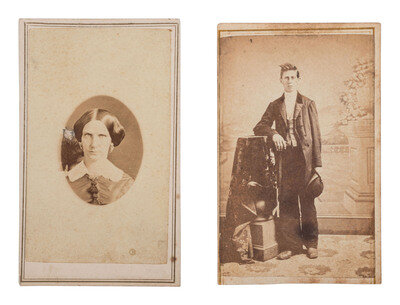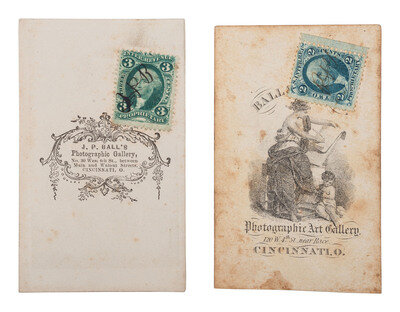Condition Report
Contact Information
Auction Specialist
Lot 129
Lot Description
2 1/8 x 3 1/2 in. CDV on cardstock mount featuring a vignetted portrait of a woman, which may be a cropped view that previously included another subject as indicated by what looks like a shoulder to the left of the woman (surface wear/abrasion left of woman's face, few spots, light soiling. Verso with imprint of J.P. Ball's Photographic Gallery, No. 30 West 4th Street, Cincinnati, Ohio, and 3-cent Internal Revenue Proprietary stamp initialed "J.P.B.," possibly written in the hand of J.P. Ball, although this cannot be confirmed. -- 2 1/4 x 3 1/2 in. CDV on cardstock mount, showing a young man standing in a studio wearing a loose-fitting jacket and pants, with a hat in hand (soiling to print and mount, trimmed edges). Verso with imprint of Ball & Thomas Photographic Art Gallery, 120 W. 4th St., Cincinnati, Ohio, and 2-cent Internal Revenue Proprietary stamp which appears to be initialed "B & T," presumably representing "Ball & Thomas." -- Together, 2 CDVs.
James Presley Ball (1825-1904) is one of the most renowned African American photographers, at one point owning the largest photographic gallery west of the Appalachians. When visiting White Sulphur Springs, Virginia in 1845 he met John B. Bailey, an African American Daguerreotypist from Boston where he acquired the passion and skill of photography. He opened a studio in Cincinnati later that year, and though it was unsuccessful, he continued his art with studios in Pittsburgh and Richmond and traveled as an itinerant Daguerreotypist. In 1849, he reopened a studio in Cincinnati. He hired his younger brother Thomas Ball to work as an operator, and in 1852 hired his future brother-in-law Alexander Thomas to work with him. By 1857, their gallery was one of the grandest in the United States attracting notables including Frederick Douglass. In 1887 Ball was chosen as the official photographer of a celebration of the 25th anniversary of the Emancipation Proclamation held in Minneapolis-St. Paul. In 1888, he moved to Helena, Montana with his son where he operated a studio for several years before moving again in 1892 to Seattle.



